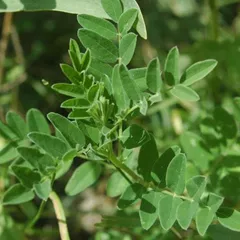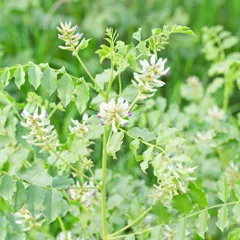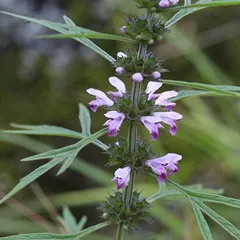Ren Shen Yang Rong Tang
Ren Shen Yang Rong Tang
Chinese: 人参养荣汤
Pinyin: Rén Shēn Yǎng Róng Tāng
Other names: Ginseng Decoction to Nourish Luxuriance, Ginseng Nourishing and Flourishing Decoction
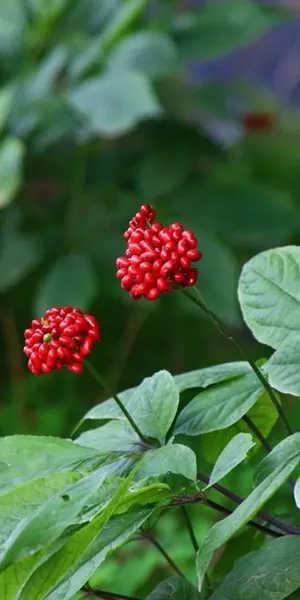
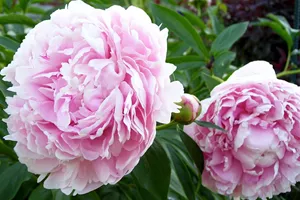
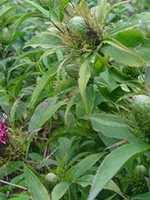
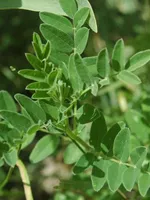




Ren Shen Yang Rong Tang
Ren Shen Yang Rong Tang
Chinese: 人参养荣汤
Pinyin: Rén Shēn Yǎng Róng Tāng
Other names: Ginseng Decoction to Nourish Luxuriance, Ginseng Nourishing and Flourishing Decoction
Number of ingredients: 14 herbs
Formula category: Formulas that tonify
Conditions for which it may be prescribed: AnemiaDebilityLate menstruation and four other conditions
- Tonifies Qi and Blood
- Nourishes the Heart
- Calms the spirit
Contraindications: Contraindicated for Qi and Blood Deficiency patterns with significant Cold.
Source date: 1174 AD
Source book: Discussion of Illnesses, Patterns, and Formulas Related to the Unification of the Three Etiologies
The information provided here is not a replacement for a doctor. You shouldn't use it for the purpose of self-diagnosing or self-medicating but rather so you can have a more informed discussion with a professional TCM practitioner.
Ren Shen Yang Rong Tang is a 14-ingredient Chinese Medicine formula with Ginseng (Ren Shen) and White Peony Roots (Bai Shao) as principal ingredients.
Invented in 1174 AD, it belongs to the category of formulas that tonify. Its main actions are: 1) tonifies Qi and Blood and 2) nourishes the Heart.
In Chinese Medicine health conditions are thought to arise due to "disharmonies" in the body as a system. These disharmonies are called "patterns" and the very purpose of herbal formulas is to fight them in order to restore the body's harmony.
In this case Ren Shen Yang Rong Tang is used by TCM practitioners to fight patterns like Blood Deficiency, Qi and Blood Deficiency or Heart and Spleen Qi and Blood Deficiency. From a Western Medicine standpoint, such patterns can give rise to a range of conditions such as late menstruation, absence of menstruation or spontaneous flow of breast milk for instance.
On this page, after a detailed description of each of the fourteen ingredients in Ren Shen Yang Rong Tang, we review the patterns and conditions that Ren Shen Yang Rong Tang helps treat.
The fourteen ingredients in Ren Shen Yang Rong Tang
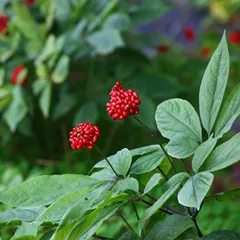
Ren Shen is a king ingredient in Ren Shen Yang Rong Tang. Like the name indicates, it means it has more power than other ingredients in the formula.
1. Ginseng (Ren Shen)
Part used: Dried root
Nature: Warm
Meridian affinity: HeartLungSpleen
Category: Tonic herbs for Qi Deficiency
Ren Shen strongly augments Qi, generates Body Fluids and tonifies the Spleen, Lungs, and Heart. Together with Bai Shao, these two herbs address the pathodynamic treated by this formula and harmonize all of the organs that are directly affected by it.
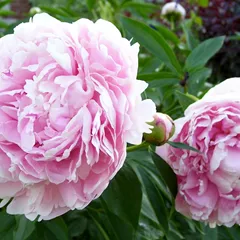
Bai Shao is a king ingredient in Ren Shen Yang Rong Tang. Like the name indicates, it means it has more power than other ingredients in the formula.
2. White Peony Roots (Bai Shao)
Part used: Dried root
Nature: Neutral
Meridian affinity: LiverSpleen
Category: Tonic herbs for Blood Deficiency
In general Bai Shao's main actions are as follows: "Tonifies the Blood and preserves the Yin. Nourishes the Liver and assists in the smooth flow of Qi. Regulates the meridians and eases the pain."
In the context of Ren Shen Yang Rong Tang, it is used because it is sour and cooling. It enters the Spleen to nourish the Blood and restrain the Yang.
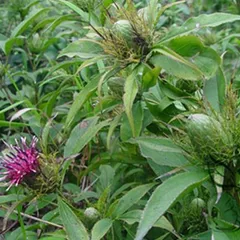
Bai Zhu is a deputy ingredient in Ren Shen Yang Rong Tang. This means it helps the king ingredient(s) treat the main pattern or it serves to treat a coexisting pattern.
3. Atractylodes Rhizomes (Bai Zhu)
Part used: Dried rhizome
Nature: Warm
Meridian affinity: SpleenStomach
Category: Tonic herbs for Qi Deficiency
In general Bai Zhu's main actions are as follows: "Tonifies the Spleen Qi. Fortifies the Spleen Yang and dispels Damp through urination. Tonifies Qi and stops sweating. Calms restless fetus when due to Deficiency of Spleen Qi."
In the context of Ren Shen Yang Rong Tang, it is used because it helps Ginseng tonify the Qi.
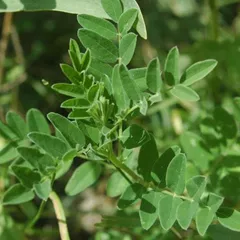
Huang Qi is a deputy ingredient in Ren Shen Yang Rong Tang. This means it helps the king ingredient(s) treat the main pattern or it serves to treat a coexisting pattern.
4. Milkvetch Roots (Huang Qi)
In general Huang Qi's main actions are as follows: "Tonifies the Wei Qi and stops perspiration. Tonifies the Spleen Qi and the Yang Qi of the Earth Element. Tonifies the Qi and Blood. Expels pus and assists in the healing of wounds. Helps to regulate water metabolism in the body and reduce edema."
In the context of Ren Shen Yang Rong Tang, it is used because it helps Ginseng tonify the Qi.
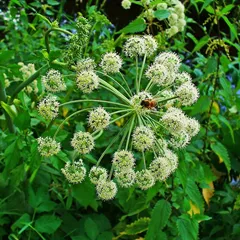
Dang Gui is a deputy ingredient in Ren Shen Yang Rong Tang. This means it helps the king ingredient(s) treat the main pattern or it serves to treat a coexisting pattern.
5. Dong Quai (Dang Gui)
Part used: Dried root
Nature: Warm
Meridian affinity: HeartLiverSpleen
Category: Tonic herbs for Blood Deficiency
In general Dang Gui's main actions are as follows: "Tonifies the Blood. Lubricates the Intestines. Relieve constipation. Promotes circulation and dispels Bi Pain. Reduce Dysmenorrhea and help with irregular menstruation."
In the context of Ren Shen Yang Rong Tang, it is used because it supports White peony root in nourishing the Blood.

Shu Di huang is a deputy ingredient in Ren Shen Yang Rong Tang. This means it helps the king ingredient(s) treat the main pattern or it serves to treat a coexisting pattern.
6. Prepared Rehmannia (Shu Di huang)
Part used: Prepared dried root tuber
Nature: Warm
Taste(s): Sweet
Meridian affinity: KidneyLiver
Category: Tonic herbs for Blood Deficiency
In general Shu Di huang's main actions are as follows: "Tonifies the Blood. Tonifies the Yin of the Kidneys."
In the context of Ren Shen Yang Rong Tang, it is used because it supports White peony root in nourishing the Blood.
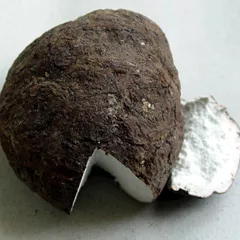
Fu Ling is a deputy ingredient in Ren Shen Yang Rong Tang. This means it helps the king ingredient(s) treat the main pattern or it serves to treat a coexisting pattern.
7. Poria-Cocos Mushrooms (Fu Ling)
Part used: Dried sclerotium
Nature: Neutral
Taste(s): Sweet
Meridian affinity: HeartKidneyLungSpleen
Category: Herbs that drain Dampness
In general Fu Ling's main actions are as follows: "Encourages urination and drains Dampness. Tonic to the Spleen/Stomach. Assists the Heart and calms the Spirit."
In the context of Ren Shen Yang Rong Tang, it is used because it helps Ginseng tonify the Qi and resolve Dampness.
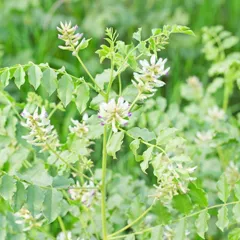
Gan Cao is a deputy ingredient in Ren Shen Yang Rong Tang. This means it helps the king ingredient(s) treat the main pattern or it serves to treat a coexisting pattern.
8. Liquorice (Gan Cao)
Part used: Dried root and rhizome
Nature: Neutral
Taste(s): Sweet
Meridian affinity: HeartLungSpleenStomach
Category: Tonic herbs for Qi Deficiency
In general Gan Cao's main actions are as follows: "Tonifies the Basal Qi and nourishes the Spleen Qi. Clears Heat and dispels toxicity. Moistens the Lungsexpel phlegm and stop coughing. Relieves spasms and alleviates pain. Harmonizes and moderates the effects of other herbs."
In the context of Ren Shen Yang Rong Tang, it is used because it helps Ginseng tonify the Qi and harmonize all ingredients.
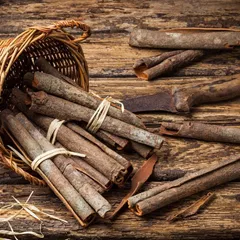
Rou Gui is an assistant ingredient in Ren Shen Yang Rong Tang. This means that it either serves to reinforces the effect of other ingredients or it moderates their toxicity.
9. Cinnamon Bark (Rou Gui)
In general Rou Gui's main actions are as follows: "Warms the Spleen and Kidneys and tonifies the Yang. Expels Cold, Warms the meridians, promotes circulation of Qi and Blood and relieves pain. Used with tonics to assist in the generation of Qi and Blood."
In the context of Ren Shen Yang Rong Tang, it is used because it warms the Yang Qi to stimulate all physiological activity.
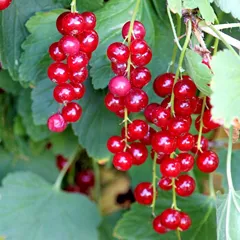
Wu Wei Zi is an assistant ingredient in Ren Shen Yang Rong Tang. This means that it either serves to reinforces the effect of other ingredients or it moderates their toxicity.
10. Schisandra Berries (Wu Wei Zi)
Part used: Dried ripe fruits
Nature: Warm
Meridian affinity: HeartKidneyLung
Category: Herbs that stabilize and bind
Wu Wei Zi is sweet, sour, and warm. It restrains the Qi and prevents excessive sweating, ensuring that augmented Qi is not dispersed to the outside but turned toward the inside and the Blood.
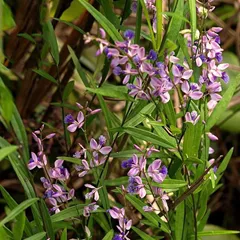
Yuan Zhi is an assistant ingredient in Ren Shen Yang Rong Tang. This means that it either serves to reinforces the effect of other ingredients or it moderates their toxicity.
11. Chinese Senega Roots (Yuan Zhi)
Yuan Zhi is bitter, acrid, and warm. It regulates the Heart Qi and establishes harmonious communication between the Heart and Kidneys to settle the spirit and calm palpitations.
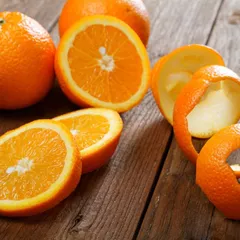
Chen Pi is an assistant ingredient in Ren Shen Yang Rong Tang. This means that it either serves to reinforces the effect of other ingredients or it moderates their toxicity.
12. Tangerine Peel (Chen Pi)
Chen Pi is acrid and warming. It enters the Lungs and Spleen to move the Qi and harmonize the Stomach, preventing the cloying characteristics of the tonifying herbs from obstructing the Qi movement.

13. Fresh Ginger (Sheng Jiang)
Sheng Jiang regulates the nutritive and protective Qi and harmonizes the Spleen and Stomach. It ensures that this complex formula is properly assimilated, and blend its many ingredients into a harmonious whole.
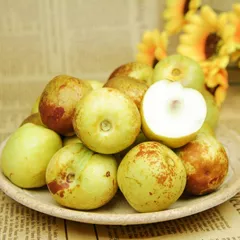
14. Jujube Dates (Da Zao)
Part used: Dried ripe fruit
Nature: Warm
Taste(s): Sweet
Meridian affinity: SpleenStomach
Category: Tonic herbs for Qi Deficiency
Da Zao regulates the nutritive and protective Qi and harmonizes the Spleen and Stomach. It ensures that this complex formula is properly assimilated, and blend its many ingredients into a harmonious whole.
Conditions and patterns for which Ren Shen Yang Rong Tang may be prescribed
It's important to remember that herbal formulas are meant to treat patterns, not "diseases" as understood in Western Medicine. According to Chinese Medicine patterns, which are disruptions to the body as a system, are the underlying root cause for diseases and conditions.
As such Ren Shen Yang Rong Tang is used by TCM practitioners to treat four different patterns which we describe below.
But before we delve into these patterns here is an overview of the Western conditions they're commonly associated with:
Late menstruation Absence of menstruation Spontaneous flow of breast milk Anemia Nonhealing ulcers Debility Nervous exhaustion
Again it wouldn't be correct to say "Ren Shen Yang Rong Tang treats late menstruation" for instance. Rather, Ren Shen Yang Rong Tang is used to treat patterns that are sometimes the root cause behind late menstruation.
Now let's look at the four patterns commonly treated with Ren Shen Yang Rong Tang.
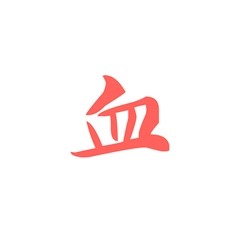
Blood (Xue) is one of Chinese Medicine's vital subtances. Learn more about Blood in Chinese Medicine
Blood Deficiency
Pulse type(s): Choppy (Se), Fine (Xi)
Tongue color: Pale
Symptoms: Insomnia Tingling Dry skin Dry hair Dry lips Dizziness Pale lips Thin body Pale face Amenorrhea Depression Poor memory Late period Palpitations Scanty periods Blurred vision Pale complexion Slightly anxiety Tingling of limbs Pale menstrual blood Lower abdominal pain Numbness in the limbs Dull white shallow face Feeling of bearing down Withered and brittle nails
Ren Shen Yang Rong Tang is sometimes prescribed by TCM practitioners to treat Blood Deficiency. This pattern leads to symptoms such as dizziness, scanty periods, amenorrhea and dull white shallow face. Patients with Blood Deficiency typically exhibit choppy (Se) or fine (Xi) pulses as well as Pale, thin and slightly tongue .
A Deficiency of Blood occurs when their entire body, a part of body or a particular Organ is insufficiently nourished by Blood. This can be caused by a loss of blood, insufficient Spleen Qi to produce Blood or congealed Blood which prevents new Blood from forming.
The Organs most likely to be... read more about Blood Deficiency
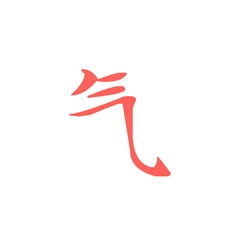
Qi is one of Chinese Medicine's vital subtances. Learn more about Qi in Chinese Medicine
Qi and Blood Deficiency
Pulse type(s): Slowed-down (Huan), Weak (Ruo), Fine (Xi)
Tongue coating: Partial absence of coating
Tongue color: Pale
Symptoms: Edema Fatigue Vertigo Anxiety Insomnia Dry hair Dry skin Dry lips Tingling Numbness Dry eyes Pale face Dizziness Pale lips Hair loss Tiredness Sore back Weak voice Sore knees Depression Low energy Poor memory Pale tongue Watery milk Palpitations Listlessness Loose stools Poor appetite Scanty periods Blurred vision Low milk supply Pale complexion General weakness Aversion to speak Pale color periods Shortness of breath Numbness in the skin Spontaneous sweating Lower abdominal pain Pale menstrual blood Numbness in the limbs Dream disturbed sleep Dull menstrual cramps Feeling of bearing down Thin and watery periods Withered and brittle nails Thin body lacking strength Pain relieved with massage Lethargic and withdrawn state Spontaneous flow of breast milk Menstruation decreases gratually No feeling of distension of the breasts Insufficient or absent lactation after childbirth
Ren Shen Yang Rong Tang is sometimes prescribed by TCM practitioners to treat Qi and Blood Deficiency. This pattern leads to symptoms such as general weakness, fatigue, weak voice and pale face. Patients with Qi and Blood Deficiency typically exhibit slowed-down (Huan), weak (Ruo) or fine (Xi) pulses as well as Pale tongue with thin white coating .
The Qi and Blood are from the some origin and these two elements are transformable between each other. The Qi creates the Blood, and vice versa the Blood supplies Qi. Therefore it is quite common both patterns appear at the same time.
When general Qi is Deficient, the patients lack the energy to... read more about Qi and Blood Deficiency
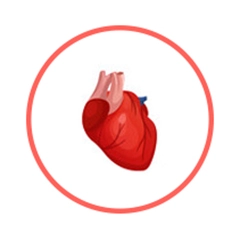
The Heart is a so-called "Zang" Organ. Learn more about the Heart in Chinese Medicine
Heart and Spleen Qi and Blood Deficiency
Symptoms: Fatigue Coughing Dry skin Dry mouth Dry throat Weight loss Palpitations Feverishness Forgetfulness Poor appetite Shortness of breath Dyspnea on exertion Restlnessness at night
Ren Shen Yang Rong Tang is sometimes prescribed by TCM practitioners to treat Heart and Spleen Qi and Blood Deficiency. This pattern leads to symptoms such as palpitations, forgetfulness, restlnessness at night and feverishness.

The Spleen is a so-called "Zang" Organ. Learn more about the Spleen in Chinese Medicine
Spleen and Stomach Qi Deficiency
Pulse type(s): Weak (Ruo)
Tongue color: Pale
Symptoms: Fatigue Deafness Tinnitus Belching Vomiting Diarrhea Dizziness Pale face Pale lips Weak voice Watery milk Unsteadiness Loose stools Poor appetite Blurred vision Pale complexion Shortness of breath Abdominal distension Lower abdominal pain No feeling of distension of the breasts Insufficient or absent lactation after childbirth
Ren Shen Yang Rong Tang is sometimes prescribed by TCM practitioners to treat Spleen and Stomach Qi Deficiency. This pattern leads to symptoms such as dizziness, unsteadiness, blurred vision and deafness. Patients with Spleen and Stomach Qi Deficiency typically exhibit weak (Ruo) pulses as well as a pale tongue.
Formulas similar to Ren Shen Yang Rong Tang
Shi Quan Da Bu Tang is 64% similar to Ren Shen Yang Rong Tang
Ba Zhen Tang is 64% similar to Ren Shen Yang Rong Tang
Bu Zhong Yi Qi Tang is 57% similar to Ren Shen Yang Rong Tang
Gui Pi Tang is 57% similar to Ren Shen Yang Rong Tang
Sheng Yang Yi Wei Tang is 56% similar to Ren Shen Yang Rong Tang
Ba Zhen Yi Mu Tang is 50% similar to Ren Shen Yang Rong Tang

